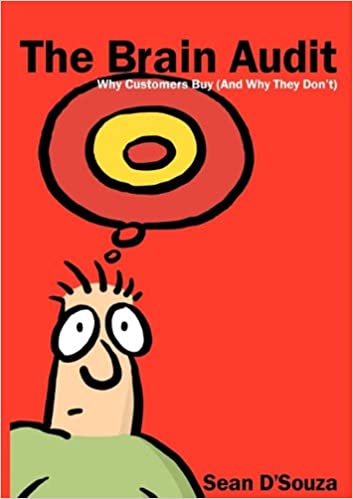This post is part of the 📖 The Brain Audit series.
Today I am reading the same chapter Bag No. 3: The Target Profile from the book The Brain Audit: Why Customers Buy (and Why They Don’t) written by Author, Sean D’Souza.
Do you often wonder what your customer is thinking? Don’t leave the thought process to chance and let that customer walk away. Your customers don’t want to walk away. They want to buy from you.
The Brain Audit shows you how the customer takes decisions. And what you need to put in place, so that the customer feels happy to buy products or services from you.
Yesterday, I started reading Bag No. 3: The Target Profile chapter.
From the introduction chapter, we read and understand that we need to know the 7 elements of why our customers buy from us or why they don’t. Here are the 7 things for you to recap.
- Bag No. 1: The Problem
- Bag No. 2: The Solution
Bag No. 3: The Target Profile (The Trigger)(we are reading this today)- Bag No. 4: The Objections
- Bag No. 5: The Testimonials
- Bag No. 6: The Risk Reversal
- Bag No. 7: The Uniqueness
Bag 3: The Target Profile
Creating a Profile
Let’s start at the top: how do you create a profile?
- Step 1: Start with a demographic
- Step 2: Choose a real person from that demographic
- Step 3: Speak to that person and find out their list of problems (with regard to a product/service)
- Step 4: Choose one problem then expand it
- Step 5: Use a real person to get feedback.
Author Sean D’Souza gave a lot of example throughout the book. It’s not ethical to reproduce the examples and stories here. Let me tell you the stories and illustrations are super relative to the topic and pathfinders. Do not hesitate to get the book and lift your business from the ashes. This book is too good to pass.
Back to the book:
There are several reasons why you may think that target profiling doesn’t seem to work.
If you want to get the maximum impact, you’re going to have to exclude people.
Strangely, the more niche you make your product/service seem, the more you’ll find people attracted to it.
The author has provided excellent answers to these questions:
1) Won’t target profiling really start to exclude people? 2) What if I already have a sales message that seems to work for me? 3) What if I already have several audiences that seem to buy my product/service? 4) What if I have multiple products/services? 5) What if my products/services solve multiple problems?

Do you know you can listen to this book on Amazon Audible for FREE?
If you are not into reading like me, then you can listen to this book for FREE on Amazon Audible
Don't Read. Just 🎧The Target Profile

There’s a difference between ‘target audience’ and ‘target profile’.
A target audience represents a group of people who seem to have something in common.
The target profile is just one person. A real person, with a real name, with an actual address, and real phone number. And with real problems.
We need to concentration on target profile, not on the target audience.
To create a profile, we have to take five specific steps:
Step 1: Start with a demographic;
Step 2: Choose a real person from that demographic;
Step 3: Speak to that person and find out the list of problems (with regard to a product/service);
Step 4: Choose one problem then expand it;
Step 5: Use a real person to get feedback.
That’s it for today. Tomorrow we will read the next chapter The Trigger
Key Takeaways
- So if you have five products/services/messages, and want to attract different people through your website, you can create five landing pages.
Summary
Every product will solve multiple problems. Yet if you base your marketing on individual profiles, each message will be far more powerful than if you simply try to get every single problem across in the same message.
Restricting yourself to a target profile (just one person) rather than the whole bunch of target audience (whole demographic) gets you to easily focus on the problems and solutions of that one person with extreme clarity.
Target just one customer profile and then know everything about their problems and pain points and address them in your message.
Buy or not buy?
This book is excellent. Do not hesitate to pick this. Pick the physical book, so you take notes and highlight the bits you want to reference later. This book is such a kind of book where you need to pass it to the next generation.
Listen, I don’t care whether you buy the book using one of the links on the page or not but just buy. You will be glad for my recommendation.
Author(s): Sean D'Souza
Part 6 of 15 in the 📖 The Brain Audit book series.
Series Start | The Brain Audit: Why Customers Buy (and Why They Don't) - Day 5 | The Brain Audit: Why Customers Buy (and Why They Don't) - Day 7
